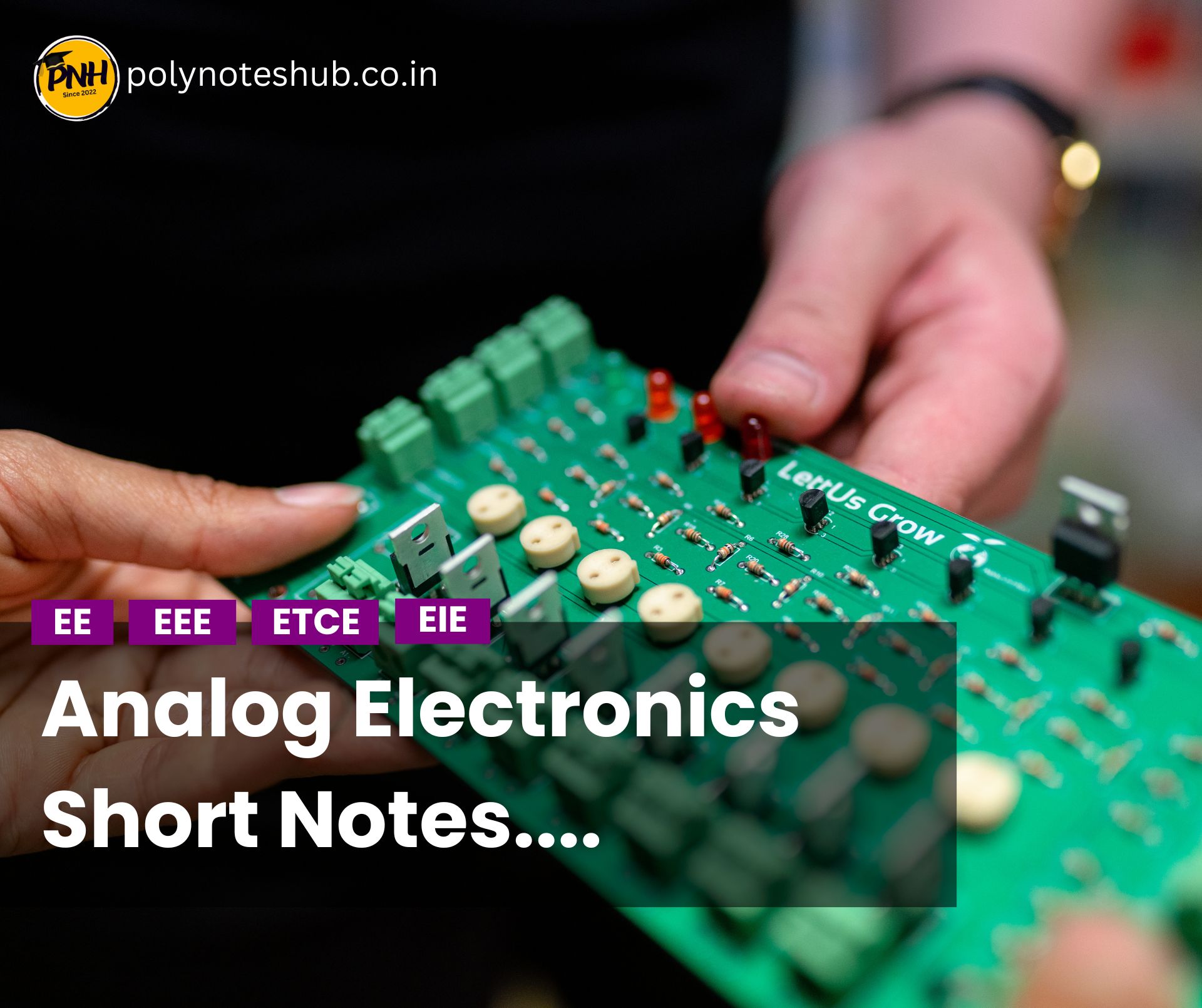On this page, we will review the Analog Electronics Short Notes PDF Part 29. Welcome to Poly Notes Hub, a leading destination for analog electronics notes for engineering students.
Author Name: Arun Paul
Analog Electronics Short Notes Pdf Part 29
Here we have listed some analog electronics short notes for all types of exams like diploma engineering, degree engineering, and GATE exam and many more. In every page, we have listed 10 short analog electronics questions and answers and anyone can download it by a single click for future use.
1. What is VI Characteristics of SCR?
The V-I characteristics of an SCR describe the relationship between the anode-to-cathode voltage (V) and the anode current (I) for different gate current values. The curve is divided into three regions:
- Forward Blocking Region – SCR is forward-biased but not conducting (no gate signal).
- Forward Conduction Region – SCR conducts heavily after the gate is triggered or breakover voltage is reached.
- Reverse Blocking Region – SCR is reverse-biased and blocks current like a diode in reverse.
2. How SCR Acts as a Switch?
SCR acts as a unidirectional switch:
- It stays OFF (non-conducting) until a gate pulse is applied or the voltage reaches breakover.
- Once triggered, it turns ON and continues to conduct as long as the anode current is above holding current.
- It turns OFF only when the current falls below holding current or by applying commutation.
3. What are the SCR Turn ON Methods?
- Gate Triggering – Apply a small gate current to trigger conduction.
- Forward Voltage Triggering (Breakover) – Apply a high enough forward voltage to reach the breakover point.
- dv/dt Triggering – A sudden increase in voltage across SCR may turn it ON due to capacitive effects.
- Temperature Triggering – High temperatures may cause unwanted turn-on (not preferred).
4. What are the SCR Turn OFF Methods?
- Natural Commutation – Let the current naturally drop below holding current (common in AC circuits).
- Forced Commutation – Apply an external circuit to force the current to zero (used in DC circuits).
5. What is Anode Current Interruption?
Anode current interruption is a method of turning off the SCR by suddenly interrupting the current flowing through the anode, reducing it below the holding current level.
6. What is Forced Commutation?
Forced commutation is a technique where external components (like a capacitor or auxiliary SCR) are used to force the current to zero, thus turning off the SCR in DC circuits.
7. What is Light Activated SCR?
A Light Activated SCR (LASCR) is an SCR that can be turned ON by exposing it to light, usually through a window in the casing. It is used in optical triggering applications like remote switching.
8. Why SCR Cannot Be Used as a Bidirectional Switch?
SCR conducts only in one direction (anode to cathode) and blocks in the reverse direction. It’s a unidirectional device, unlike a triac, which is designed for bidirectional switching.
9. Why is SCR Always Turned ON by Gate Current?
The gate current provides a controlled way to trigger the SCR. Instead of waiting for the voltage to reach the high breakover level, applying a small gate current allows safe and precise control over when the SCR turns ON.
10. How does SCR differs from an ordinary diode?
An SCR (Silicon Controlled Rectifier) differs from an ordinary diode in both structure and function. While a diode has two terminals (anode and cathode) and conducts automatically when forward biased, an SCR has three terminals (anode, cathode, and gate) and requires a gate pulse to start conduction, even if forward biased. An SCR can control high power and is used as a switch in power control applications, whereas a diode is mainly used for rectification. Internally, a diode has two layers (PN), but an SCR has four layers (PNPN) and three junctions, making it a controlled device.

